The 14 Most Impressive Women In The US Military
Maj. Lauren Edwards led more than 150 Marines and several vehicles in defensive maneuvers during the invasion of Iraq.

Sgt. Sherri Gallagher is one of the top long-range rifle marksmen in the country, and was named Soldier of the Year.
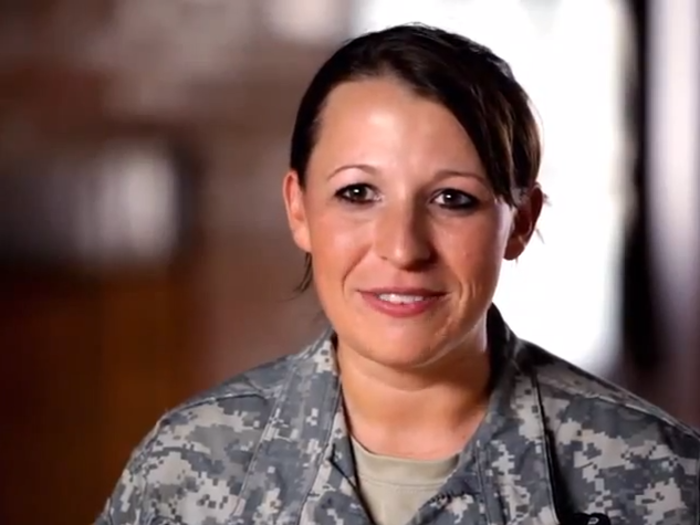
Branch: Army
Rank: Sergeant
Why she's impressive: Gallagher, a shooter in the U.S. Army Marksmanship Unit, beat out 11 other competitors for the title of Soldier of the Year. She bested her competition — mostly male — in events such as hand-to-hand combat, urban maneuvers, detainee operations, casualty evaluation, weapons familiarization, and night firing.
Firing a weapon is Gallagher's specialty; she is one of the top long-range rifle shooters in the country and, as of last year, a member of the Golden Knights, the U.S. Army Parachute Team.
For her accuracy and steady hand, Gallagher was named the 2010 Army Soldier of the Year by the Military Marksmanship Association, the first woman to claim this title.
Sgt. Leigh Ann Hester killed several enemy combatants while under attack in Iraq, saving American lives.
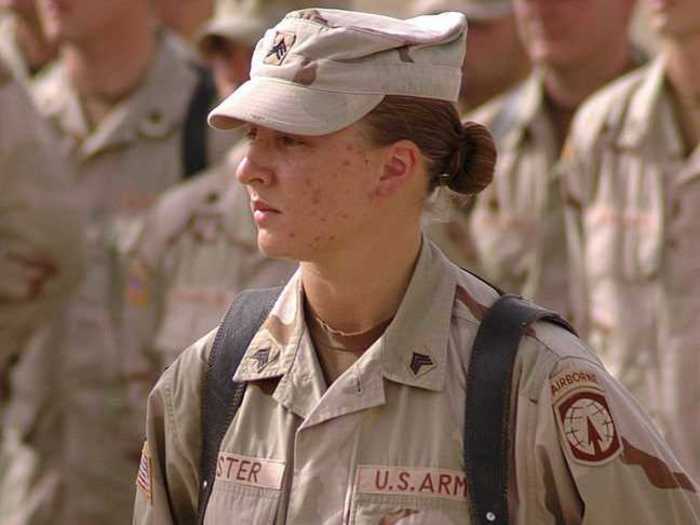
Branch: Army
Rank: Sergeant
Why she's impressive: Hester is one of the few women to be awarded for valor in close-quarters combat. When she and her squad came under fire by enemy combatants while stationed in Iraq, Hester helped repel more than two dozen Iraqi insurgents.
Amazingly, Hester walked directly into the line of fire to kill at least three enemy combatants at close range, according to a Washington Post article
Because of her swift heroism, Hester saved the lives of numerous convoy members. Her actions led her to become the first woman since World War II to earn the Silver Star Medal, the third highest award exclusively for valor in combat.
Lt. Gen. Patricia Horoho is the U.S. Army Surgeon General—the first non-male, non-physician to take on this role.
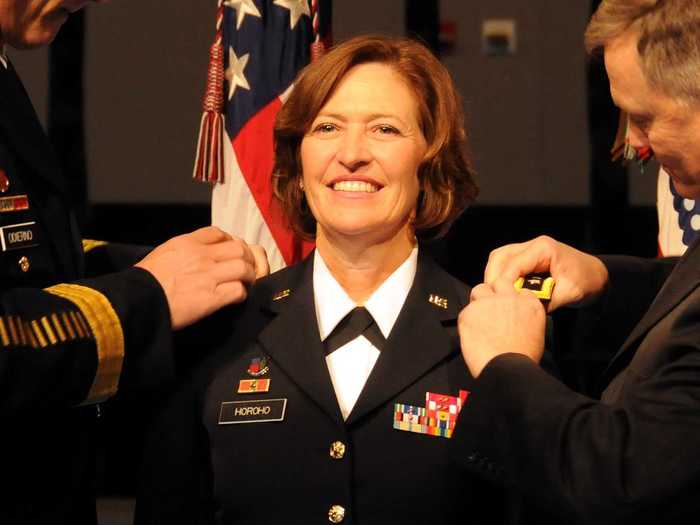
Branch: Army
Rank: Lieutenant General
Why she's impressive: Horoho is the 43rd Surgeon General of the U.S. Army, the highest-ranking position in the Army's medical department. She's the first non-male, non-physician to assume this role in more than 200 years. (She's a nurse, not a doctor.)
Like many military nurses, male and female, Horoho has a lot of experience working in trauma units. She is a recipient of the Society of Trauma Nurses Leadership Award.
As an authority in her field, Horoho co-authored a chapter on training field hospitals published by the U.S. Army Reserve Command Surgeon. Horoho was honored for her actions at the Pentagon on 9/11 by the American Red Cross and Nursing Spectrum as a "Nurse Hero."
She was also named as the USO’s "Woman of the Year" in 2009.
As a military correspondent, Staff Sgt. Lindsey Kibler covered Army development and outreach in one of the most dangerous regions of Afghanistan.
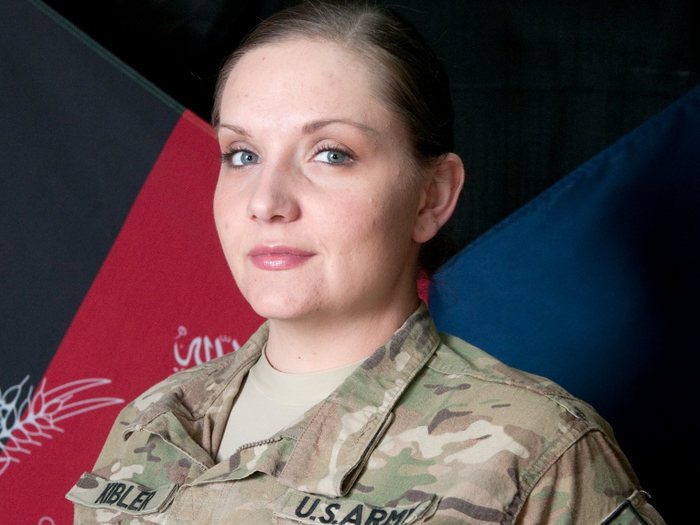
Branch: Army
Rank: Staff Sergeant
Why she's impressive: Lindsey Kibler was personally selected by the Army's Chief of Media Operations to cover stories at Brigade Task Force level.
She reported from a dangerous and volatile area of Afghanistan covering development and outreach efforts. Kibler returned with 11 stories and over 300 photos from her assignment, which earned her recognition as the Keith L. Ware Print Journalist of the Year in 2011.
All while serving, Kibler maintained a 3.8 GPA at St. Martin's University and managed to pass a rigorous physical fitness test with flying colors just weeks after having an invasive abdominal surgery.
Cpl. MaryBeth Monson maintained the security of her base during an attack by Afghani insurgents disguised as American soldiers.
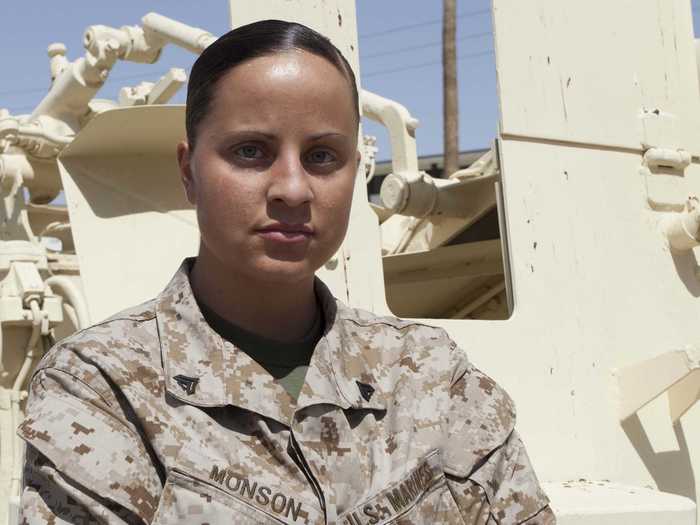
Branch: Marine Corps
Rank: Corporal
Why she's impressive: Cpl. MaryBeth Monson was on deployment in Afghanistan when enemy combatants disguised as American soldiers mounted an assault on the base.
Monson kept the personnel calm until security was back up and running and spent 80 hours volunteering to clean up afterwards, even though her unit wasn't assigned to this task.
For her calm in the line of fire and commitment to the efforts of the Marine Corps, Monson was awarded the 2013 USO's Woman of the Year Military Leadership Award. The annual award presented to one woman from each branch of the military is one of the most prestigious given to female servicemembers.
Air Force 2nd Lt. Samantha Morrison is the fastest woman triathlete in the armed forces.
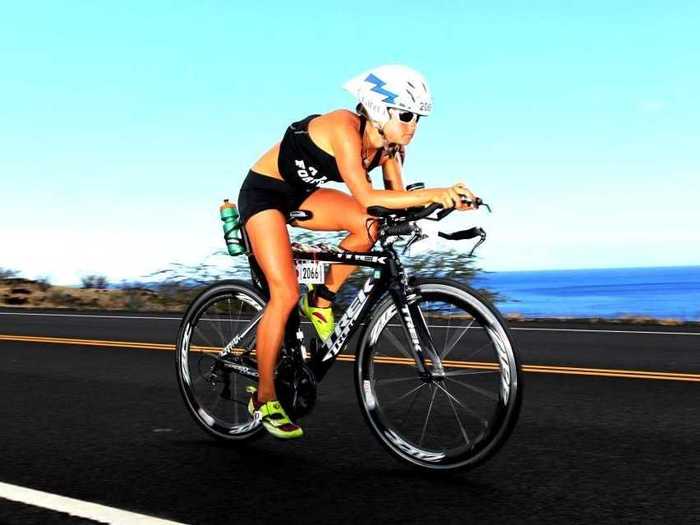
Branch: Air Force
Rank: Second Lieutenant
Why She's Impressive: Morrison won the Armed Forces Women’s Triathlon Championship in June with a time of 2:07:39, making her the fastest woman triathlete in the Department of Defense, and the third fastest in the world. Morrison, who trains 20 hours a week with a mix of swimming, biking, running, crossfit and weight training, has now competed in seven years of triathlon competitions.
The recent Air Force Academy graduate studied Behavioral Sciences and will join Seymour Johnson Air Force Base in August 2013 to work on the public affairs team. In October 2013, Morrison will compete in the Ironman World Championships for the second time, only this time she will race as the women's representative for the Air Force.
Air Force Lt. Col. Susan Pangelinan orchestrated a disaster response mission during the California wildfires.
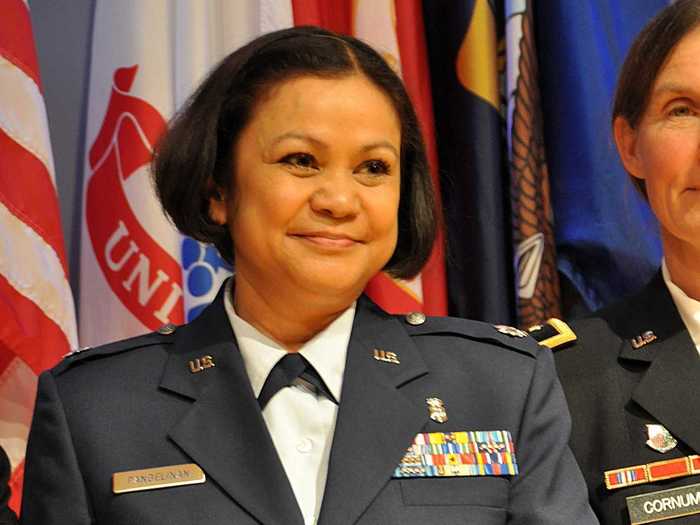
Branch: Air Force
Rank: Lieutenant Colonel
Why she's impressive: Pangelinan became an environmental hero when she served as the Medical Operations Officer during the California wildfires of 2008, reporting injuries, tracking medical supplies, and managing first responders in a disaster response mission.
Pangelinan, who currently serves as the Joint Staff Medical Advisor for the California National Guard, acts as the State of California liaison for disaster and emergency response. She advises the Army and Air Division leaders on medical matters and coordinating emergency military medical support of civilian agencies.
She was also awarded a Department of Defense Science, Technology, Engineering and Math Role Model Award for her accomplishments in the STEM fields.
Marine Capt. Katie Petronio wrote a controversial op-ed on the issue of letting women into the infantry.
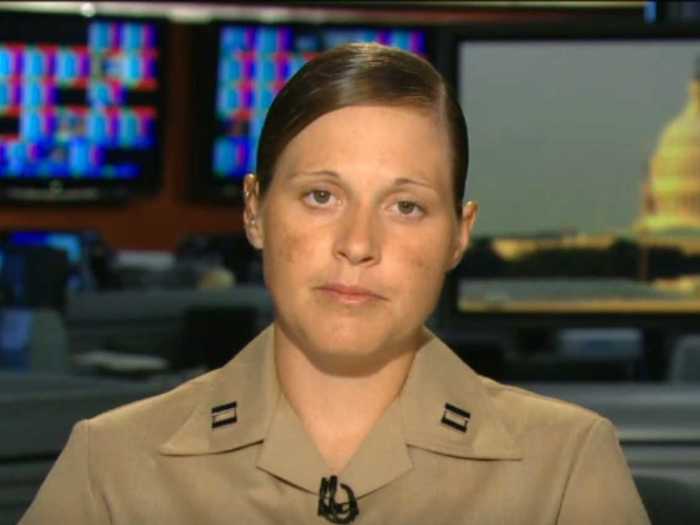
Branch: Marine Corps
Rank: Captain
Why she's impressive: Petronio made headlines after writing a controversial op-ed piece explaining why women shouldn't serve in the infantry.
It's a surprising opinion to come from a woman who has served in combat herself, but Petronio showed determination and grit as she stuck to guns in an interview with CNN, detailing her own combat experiences that left her mentally and physically drained.
Petronio thinks including women in combat arms occupations would weaken the armed forces.
She suffered from weight loss, muscle atrophy, infertility, and other health problems after her last deployment. Petronio received a lot of backlash for her unpopular opinion, but her realistic, though polemic, look at the issue has been an eye opener in the military world; of the 10 women who've tested for the infantry, nine failed. The one who passed dropped out just a week later due to a stress fracture in her foot.
Spec. Ashley Pullen saved the life of a squad member by shielding him with her own body while under attack.
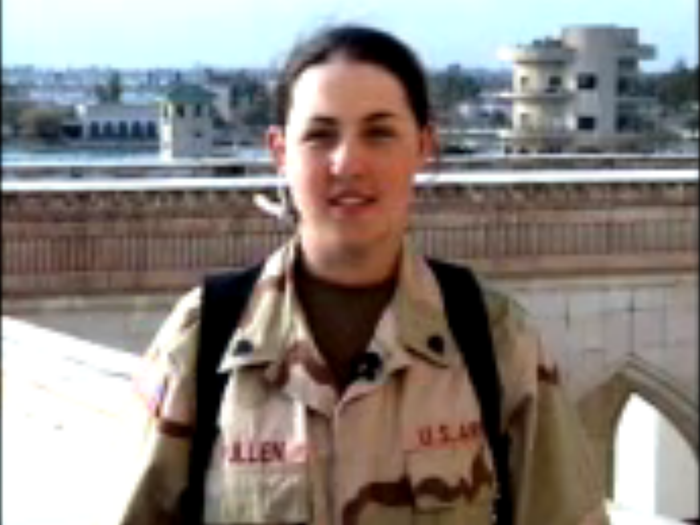
Branch: Army
Rank: Specialist
Why she's impressive: Ashley Pullen, a Humvee driver, saved a fellow squad member's life when her convoy came under attack in Baghdad. She treated the injured squad member's stomach wound and even shielded him with her own body to protect him from further blasts. She then helped transport wounded soldiers to a makeshift landing zone for evacuation by helicopters.
Pullen was awarded a Bronze Star with Valor distinguishing device for her heroism on that day.
Capt. Maria Urso won the highest honor given by the U.S. government for her research on musculoskeletal injury and repair.

Branch: Army
Rank: Captain
Why she's impressive: Capt. Urso received the Presidential Early Career Award for Scientists and Engineers, or PECASE, the highest honor the U.S. government gives to science and engineering professionals in the early stages of research careers, for her research on cellular mechanisms of musculoskeletal injury and repair.
She spends her time at the U.S. Army Research Institute of Environmental Medicine evaluating new therapies that might be used to treat blunt-force trauma and blast injuries.
On top of her scientific research, Capt. Urso is a member of the All-Army marathon team. She competed in the Marine Corps Marathon in October, coming in with a time of 3:12:44, helping the women's All-Army marathon team to a silver medal.
Spc. Elizabeth Wasil overcame combat injuries to become an all-star Army athlete.
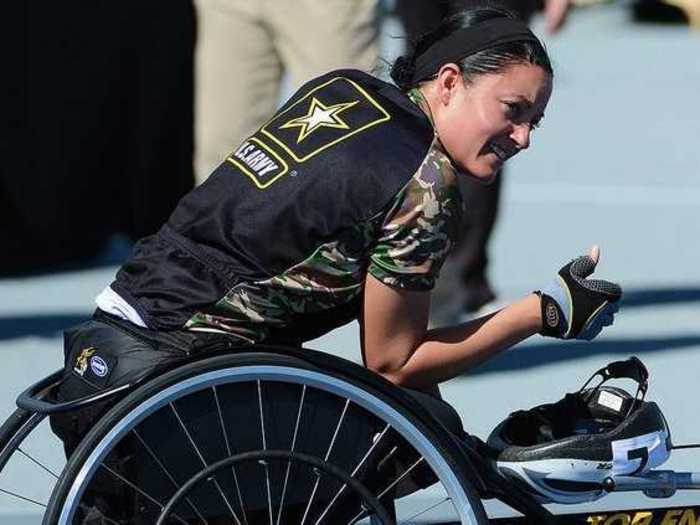
Branch: Army
Rank: Specialist
Why she's impressive: Elizabeth Wasil suffered from bilateral hip injuries while serving in Iraq as a combat medic. She started swimming after undergoing three surgeries, and soon began training competitively. Wasil competed in the 2013 U.S. Paralympics Spring Swimming Nationals and set a national record for her division in breast stroke.
Wasil, who joined the Army at age 17 after graduating from an at-risk youth program in Arizona, also competes in cycling and track and field. She's continuing to train with the hopes of earning a spot on Team USA for the 2016 Paralympic Games in Rio de Janeiro.
Margaret Woodward commanded the entire U.S. air campaign in Libya during Operation Odyssey Dawn.
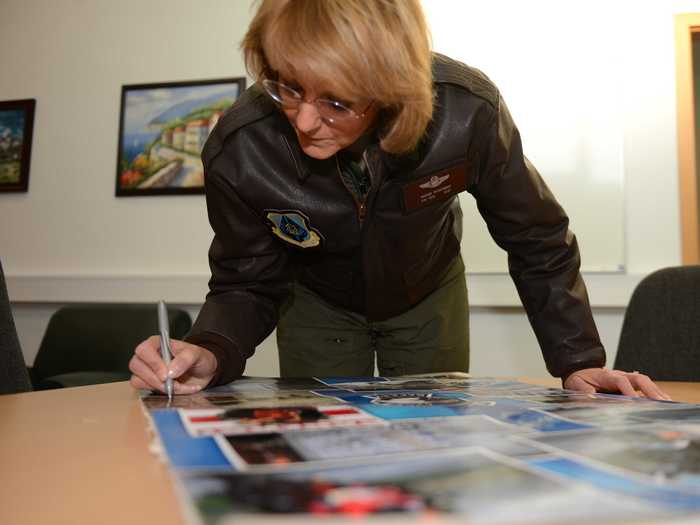
Branch: Air Force
Rank: Major General
Why she's impressive: Woodward organized the U.S. airstrike campaign in Libya as the commander of Operation Odyssey Dawn's air component. She was the first woman to command a U.S. combat air campaign.
Today, the Major General holds the very important role as Director of the Air Force Sexual Assault Prevention and Response (SAPR) in Washington, D.C. Her office is the single point of accountability and oversight for sexual assault policy matters, and she reports directly to the Vice Chief of Staff of the Air Force.
The fewer than 10 female Marines who have volunteered to go through the grueling, 13-week Infantry Officers Course.
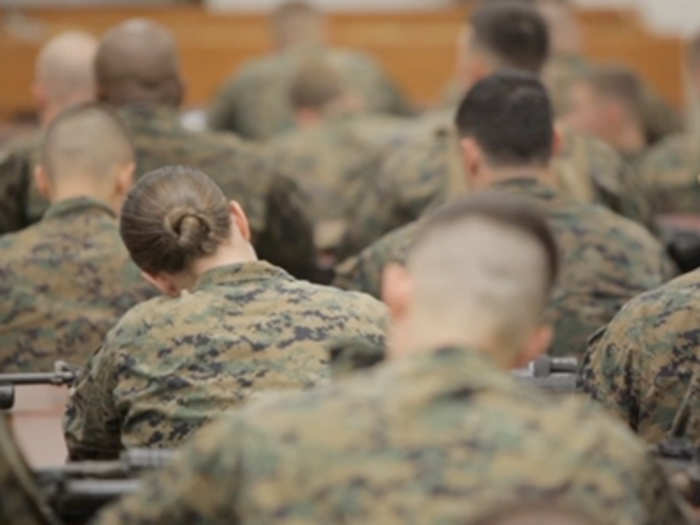
Branch: Marine Corps
Rank: Various
Why they're impressive: The Marine Corps Infantry Officers Course is an intense, physically and emotionally taxing 13-week course filled with limit-testing heavy work and little sleep. The Marines who sign up endure miles and miles of land navigation, extensive scenario training, and intelligence tests, all while carrying 70-plus pounds of extra ammunition, food, and weapons. Each year, at least 25 percent of the Marines who apply wash out.
Ten anonymous female Marines have attempted infantry officers course, which starts with the combat endurance test — designed as a initial test to wash out all nonhackers.
All but one failed. The Marine who completed the endurance test and entered training was removed two weeks later due to injury.
We decided to include these women not because they're attempting one of the most difficult infantry leadership courses on earth, but because of the fact that if they do end up surmounting the odds and surviving the 13 weeks, they will still not earn the designation of Infantry Officer.
The pilot program is simply for the Corps to see if women in combat is feasible, which means that the 100 women who attempt the course by the end of the fiscal year are simply doing it for posterity — so that women in the future who pass the course can earn the title.
That is nothing short of exemplary, and impressive, service and sacrifice.
Now see what our servicemembers learn while serving.
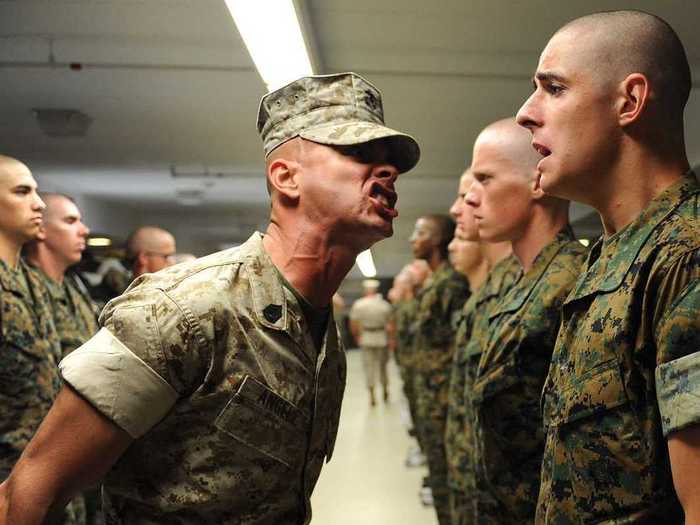
Popular Right Now
Popular Keywords
Advertisement